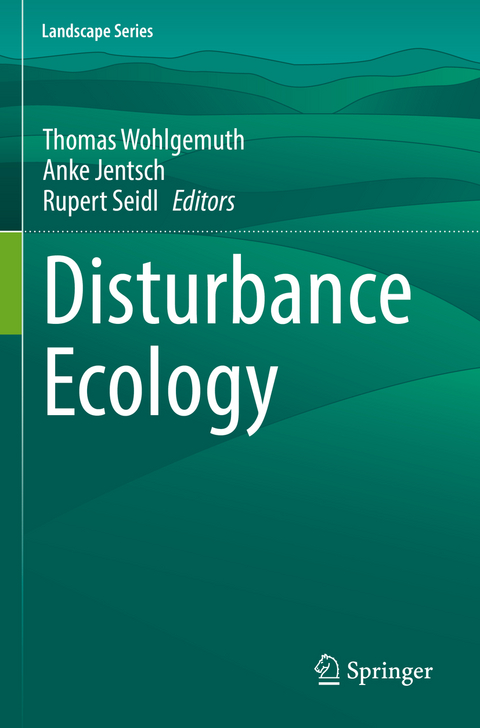
Disturbance Ecology
Springer International Publishing (Verlag)
978-3-030-98758-9 (ISBN)
This edited work presents a multi-faceted view on the causes and consequences of disturbance in ecosystems. Vegetation can be affected by a variety of different disturbances such as wind, floods, fire, and insect attack, leading to an abrupt change in live biomass. Disturbance is a motor of vegetation dynamics, but also sensitive to climate change and poses a challenge for ecosystem management.
Readers will discover the global distribution of disturbance regimes and learn about the importance of disturbances for biodiversity and the evolution of plant and animal life. The book provides a Central European perspective on disturbance ecology, and addresses important disturbance agents such as fire, wind, avalanches, tree diseases, insect defoliators, bark beetles and large herbivores in dedicated chapters. It furthermore includes chapters on anthropogenic disturbances in forests and grasslands. The impact of climate change on disturbance regimes and approaches to address disturbance risks in ecosystem management are discussed in concluding chapters. Within the 18 chapters 14 textboxes highlight current topics of disturbance ecology and provide deeper methodological insights into the field.
Disturbances strongly shape our landscapes and maintain our biodiversity. A better understanding of their ecology is thus fundamental for contextualizing the dynamic changes in our environment. This book is a valuable resource for students and practitioners interested in disturbances and their management.
lt;i>Thomas Wohlgemuth is head of the research group Disturbance Ecology at the Swiss Federal Institute for Forest, Snow and Landscape Research WSL in Birmensdorf (Switzerland). He investigates reforestation after windthrow, forest fire, and drought-induced mortality, as well as early growth of tree species under experimental conditions. His focus is on the interaction between disturbance and climate change, and the effects of this interaction on forest communities.
Anke Jentsch is professor of Disturbance Ecology and Vegetation Dynamics at the University of Bayreuth (Germany). Her research covers, in particular, disturbance and biodiversity, natural hazards, and climate change. Her scientific interests focus on the understanding of ecosystem dynamics and community resilience. Her work includes extensive field experiments in Central Europe on the effects of weather extremes on ecosystem functions.
Rupert Seidl is professor of Ecosystem Dynamics and Forest Management at the Technical University of Munich (TUM) in Germany. He works towards a better understanding of forest change, and harnesses these insights to improve ecosystem management. Methodologically, he combines dynamic simulation models with remote sensing data and field observations to quantify past and potential future changes in forest structure, composition, and function.
Chap 1: Disturbance ecology: a guideline.- Chap 2: Definitions and quantifications.- Chap 3: Concepts.- Chap 4: Abiotic disturbances.- Chap 5: Biotic disturbances.- Chap 6: Anthropogenic disturbances.- Chap 7: Disturbances in global change.- Chap 8: Disturbances and management.
| Erscheinungsdatum | 21.11.2023 |
|---|---|
| Reihe/Serie | Landscape Series |
| Zusatzinfo | XI, 439 p. 153 illus. in color. |
| Verlagsort | Cham |
| Sprache | englisch |
| Maße | 155 x 235 mm |
| Gewicht | 688 g |
| Themenwelt | Naturwissenschaften ► Biologie ► Botanik |
| Naturwissenschaften ► Biologie ► Ökologie / Naturschutz | |
| Schlagworte | Abiotic disturbances • anthropogenic disturbances • biodiversity • Biotic disturbances • Disturbance Ecology • global change |
| ISBN-10 | 3-030-98758-2 / 3030987582 |
| ISBN-13 | 978-3-030-98758-9 / 9783030987589 |
| Zustand | Neuware |
| Informationen gemäß Produktsicherheitsverordnung (GPSR) | |
| Haben Sie eine Frage zum Produkt? |
aus dem Bereich


